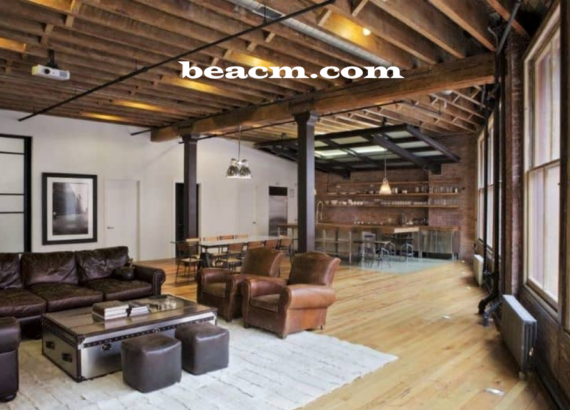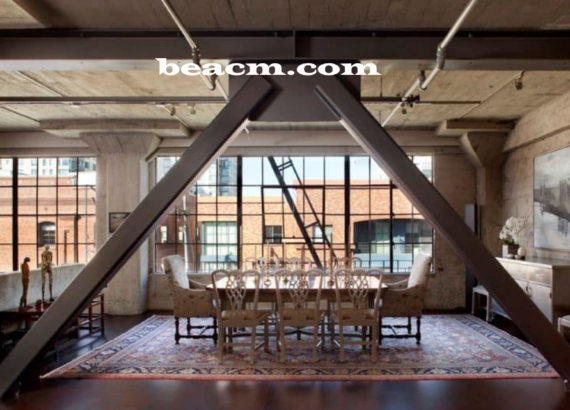To create an industrial interior design

To Create an Industrial Interior Design
Industrial interior design has recently gained popularity. More and more people are looking for stylish, modern rooms that are not too cold. This decorative style approach offers an appealing, cosy and charming look of older aesthetics combined with a touch of modern elegance.

Industrial interior design
Industrial design with loft apartments, large windows and unplastered brick can make it intimidating for many people. It seems impossible to achieve the look without the right architecture. Fortunately, this elegant and stylish look is easily achieved in most rooms with a few careful furnishing options.
What is industrial interior design?
Before you start designing a room, it is helpful to understand the core concepts of industrial interiors. The style of decoration is derived from the sober, naked material look of old warehouses. Usually, these are bare metals, wood and exposed bricks. Often it can also contain upcycled or salvaged materials.
The industrial aesthetic is pleasingly bold thanks to the combination of worn, weathered and exposed materials with the elegance of modern minimalism. Shades tend to be relatively neutral, including many shades of grey, cast iron and exposed natural wood.
Creating an industrial interior design
One of the great advantages of industrial design is that it can be very flexible. The colour palette is easy to edit in a variety of areas. However, the challenge comes from the aspect of minimalism. If you have less form to work with, you have to make more precise design decisions.

Industrial interior design includes minimalism.
Keep your interiors open
Many of the themes of the industrial look come from the natural style of old warehouses. These rooms are usually relatively open and often have high ceilings. It is probably not possible to change the bare bones of the room you are designing. However, if you are able to open up the ceiling and expose some rafters, pipes and ducts, this could be a great improvement for the room. However, this is not always practical or feasible.
However, you can create an open, flowing floor plan that gives the room an industrial feel. Avoid larger obstacles in the room. If possible, remove walls where things might close up. In the case of load-bearing walls, you should remove them and replace them with metal supports. Again, this may not always be an option, but such efforts can make a big difference to the design of your room.,
The use of exposed materials such as brick and an open floor plan is the key to industrial design.
Select Neutral Colors
Grey, brown and earth tones are the main colours in industrial design. This colour palette is determined by metal and wood, which are often found in old industrial rooms. Ideally, these colours should come from the natural or lightly processed colours of the materials used in your furniture. Of course most people do not want to sit on cast-iron sofas. For seating, the upholstery is acceptable, but try to stick to these neutral colour palettes.
If you find that your colours are getting a bit too monotonous, you should use bright white for walls or built-in furniture. Lighter wood colours can also help to add a little warmth to the room. For the floor, hardwood works wonders with a large, modern carpet. Look for decorative pieces in neutral tones. For example, a beige or grey couch is best for industrial design.

Use brown colours in the form of wood for industrial decoration.
Go naked with your materials, but do not overdo it – keep the carpet!
Naked is always the right choice for industrial design. One of the key themes of the industrial look is the exposed interior of a building. Just as open rafters and metal supports complement style, exposed metal supports on furniture add to the look. Similarly, lightly processed woods are ideal for this aesthetic.
The goal when choosing carpets and furniture is to see what you can strip off. Instead of a fully upholstered armchair, choose one with exposed wooden arms and supports. Consider bar chairs with cast metal legs.

In industrial design, as much material as possible is removed without making the room uncomfortable.
Be careful with the comfort, however. The challenge of minimalist design is to ensure that the space is still usable after you’ve removed most of the extras. As cool as these upcycling tubes may look as a seat, they are probably not very comfortable to sit on. You can always use the more extreme industrial look for tables, shelves and other furniture where comfort is less important.
Your accessories and artwork offer the opportunity to become aggressive with the industrial look. Secured industrial design elements and objects can make an impression as decorative items. For wall art, consider more abstract pieces that match the colour palette of the room.

Don’t forget the comfort and soft textures when creating industrial interior design.




